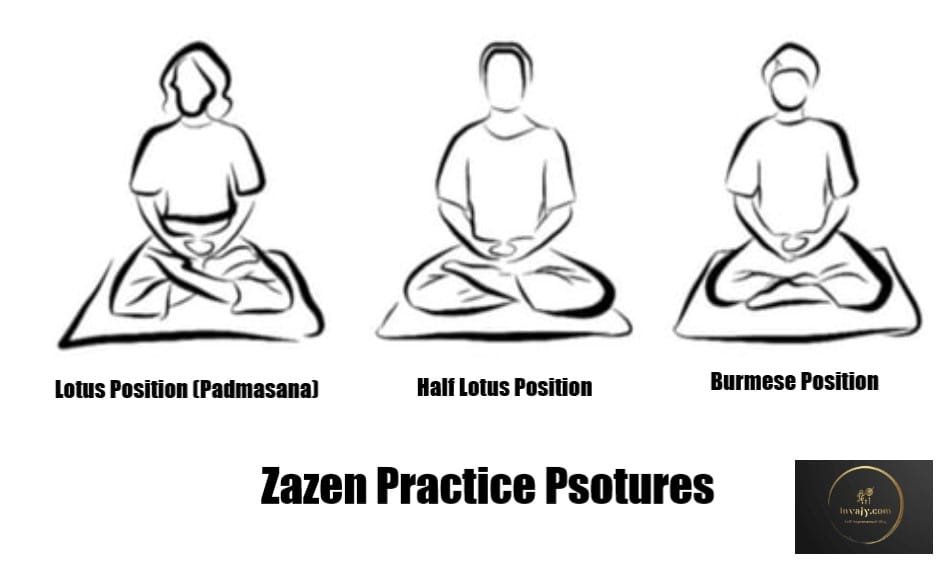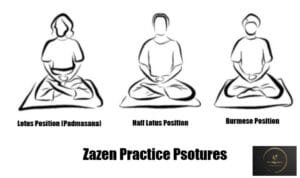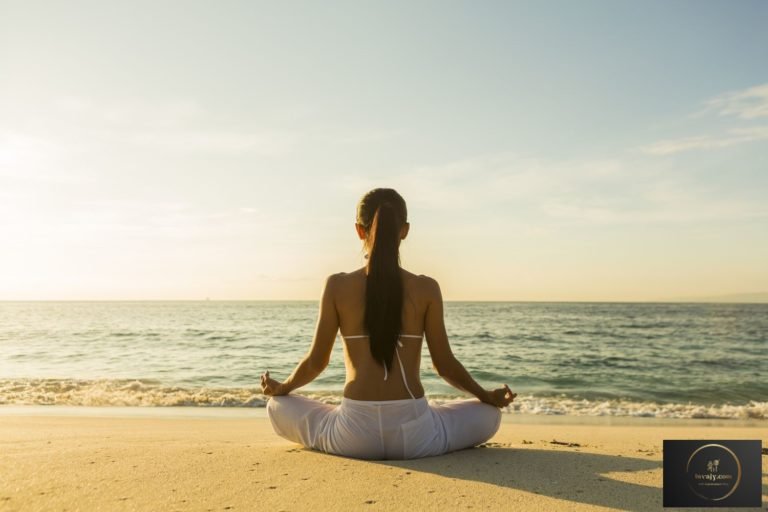How to Practice Zazen Meditation?
Find inner peace with Zazen meditation! Explore easy tips to cultivate mindfulness and embrace the present moment. Your journey to stillness starts now!

Today, I’d like to share with you something close to my heart—zazen meditation. This practice, often referred to as “seated meditation,” has become a sanctuary for me amidst the chaos of everyday life. While it might seem simple at first glance, zazen is a journey that offers profound insights and a deeper connection to the present moment. Join me as I guide you through the steps of practicing zazen, weaving in my personal experiences and reflections along the way.
What is Zazen?
Zazen isn’t just about sitting still; it’s about becoming fully aware of yourself and your surroundings. Zazen is the seated meditation practice of Zen Buddhism , which involves a specific posture, rhythmic breathing, and a focused but relaxed state of mind to achieve insight into one’s true nature.
When I first began practicing zazen, I was surprised by how challenging it could be. Thoughts used to race through my mind like a bustling city street, and I often found it difficult to settle into the stillness. However, over time, I learned that the beauty of zazen lies in the act of observation—watching those thoughts pass by without getting caught up in them. Unlike other forms of meditation that may focus on visualization or mantra repetition, zazen emphasizes direct observation of the present moment, allowing insights to arise organically.
Why Zazen?
You might be wondering why you should give zazen a try. Well, here’s what I’ve discovered:
- Stress Relief: After a long day, zazen offers a much-needed escape. I often find that just a few minutes of focused breathing can melt away the stress I’ve accumulated.
- Clarity and Focus: It’s amazing how clear my mind feels after a session. I often leave my mat with a renewed sense of purpose and clarity.
- Emotional Balance: Zazen helps me recognize my feelings without judgment. I’ve learned to observe my emotions, which has made navigating life’s ups and downs a bit easier.
- Spiritual Growth: Zazen has offered a pathway to deeper self-awareness and understanding of my interconnectedness with the universe.
Preparing for Zazen
Before you start zazen meditation, you must do few initial preparations to increase its efficiency.
Creating Your Space
Before I settle in for zazen, I make it a point to create a calming environment. Here’s how I do it:
- Choose a Quiet Spot: I’ve transformed a small corner of my living room into a meditation nook. It’s adorned with a soft mat, a cushion, and a few plants. Finding your own special spot can make a big difference. Choose a place where you can meditate without distractions. This could be a corner of your home, a garden, or even a quiet park.
- Minimize Distractions: I turn off my mobile phone and dim the lights, creating a serene atmosphere that invites calmness.
- Set the Mood: Sometimes, I’ll light a candle or burn a bit of incense—these small rituals help signal to my mind that it’s time to slow down.
Choosing the Right Time
Choosing a right time and duration is important. Here’s is my personal advise for you:
- Choose a Time: Establish a regular time for your practice, whether in the morning, during lunch, or in the evening. I’ve found that meditating in the morning helps set a peaceful tone for the day, while evening sessions allow me to reflect and unwind. Consistency is the key, it will help you imbibe it in your daily routine as a habit.
- Duration: Many practitioners aim for 20 to 30 minutes, but it’s essential to listen to your body and mind. I typically aim for 20 minutes, but I remember starting with just five. And you know what? That’s perfectly okay. You may start with shorter sessions—perhaps 5 to 10 minutes—and gradually increase the time as you become more comfortable.
The Zazen Practice
Now it’s time to strat your zazen meditation practice:
1. Find Your Posture
Posture is crucial in zazen. It took me a while to find what worked best for me, but here are a few options:
- Lotus Position (kekkafuza): Sit cross-legged with your feet resting on opposite thighs. This was challenging for me at first. I admired those who could sit like this with ease, but it felt like an unapproachable goal. Eventually, I found my way into this posture, and it became a source of stability.
- Half Lotus Position (hankafuza): This is where I landed most comfortably at first. One foot on my thigh and the other resting on the ground gave me a nice balance—providing comfort while maintaining stability.
- Burmese Position: This is often more accessible for beginners. Both feet resting on the ground, with legs crossed in front. I often revert to this one, especially on days when my body craves a little extra comfort. It feels nurturing and grounding.
- Seated in a Chair: If sitting on the floor is uncomfortable, use a chair with your feet flat on the ground.

Tips for Posture:
- Keep your back straight but relaxed. Imagine a string pulling the crown of your head upward. It may sounds a bit whimsical, but it has worked for me!
- Relax your shoulders and let your arms rest comfortably on your thighs or in your lap.
- Your chin should tuck slightly down, with your gaze directed gently forward or downward.
2. Position Your Hands
The hands play an essential role in zazen. The Cosmic Mudra has become my go-to hand position. Fold your hands into a specific mudra, with the left palm on top of the right and the fingertips lightly touching, creating an oval shape. Place this “cosmic mudra” in your lap, with your hands resting on your belly. It’s a simple gesture and symbolizes the unity of the individual and the universe, creating a sense of balance and stillness.

3. Focus on Your Breath
This is where the magic begins. Breathing is a crucial anchor in zazen. Here’s how to focus on your breath:
- Begin with Deep Breaths: Take a few deep breaths to settle in. Inhale deeply through your nose, letting your abdomen expand, and exhale slowly through your mouth.
- Shift to Natural Breathing: Allow your breath to return to its natural rhythm. Notice the sensations of breathing—the coolness of the air as you inhale and the warmth as you exhale.
- Count Your Breaths: count your breaths—inhale one, exhale two, and so on, up to ten before starting over. This counting will help you stay grounded, especially when your mind starts to wander.
4. Observe Your Thoughts
This part can be challenging but also incredibly rewarding. As you settle into your practice, thoughts and feelings will inevitably arise. I remember my first few sessions, how difficult it was to watch my thoughts float by without grabbing onto them. I’d get lost in a train of thought about my to-do list or an upcoming meeting. Over time, I learned to let those thoughts pass, almost like clouds drifting in the sky.
When distractions arise, I remind myself that it’s part of the practice. I gently guide my attention back to my breath, and it feels like coming home. It’s natural for the mind to stray; the practice lies in the return.
5. Conclude Your Session
Ending your zazen session is as important as the practice itself. As I finish my session, I take a moment to soak it all in. I slowly bring my awareness back to the space around me, feeling the floor beneath me and hearing the sounds of the world outside. It’s a gentle reminder that, while I’ve been on a journey inward, life continues to unfold around me.
I often close my practice with a few deep breaths, taking my time before I open my eyes. Then I spend a minute reflecting on my experience. Sometimes, I journal about my experience, noting any insights or feelings that surfaced during my meditation.
Overcoming Challenges
While you will practice zazen meditation, you will face few challenges. Here is how to overcome them:
Distractions
Distractions are an inevitable part of zazen. When I first started, I found it incredibly frustrating. Now, I try to embrace them. I acknowledge the noise, whether it’s a creaking floorboard or a passing car, and let it be part of my experience.
Physical Discomfort
Physical discomfort may arise during extended sitting. If discomfort becomes too distracting, feel free to adjust your position. It’s better to find a comfortable posture than to endure pain. There have been times when my legs have felt restless or my back has ached. If that happens, I give myself permission to shift my position or even take a break. It’s all part of listening to my body.
If sitting for longer periods is challenging, start with short sessions and gradually increase as your body becomes accustomed to it.
Mental Restlessness
I still have days when my mind races, and I can’t seem to settle down. On those days, I sometimes do a few minutes of mindful walking or gentle yoga before zazen. This helps me release some of that pent-up energy.
For beginners, guided zazen sessions can provide structure and support, making it easier to stay focused.
Integrating Zazen into Daily Life
Zazen doesn’t have to be limited to your meditation cushion. Here are some ways to integrate its principles into your everyday life:
- Practice Mindful Breathing: Take moments throughout your day to pause and focus on your breath, especially during stressful situations.
- Engage in Mindful Activities: Whether you are cooking, eating, walking, washing dishes, or even sipping tea, practice being fully present in the moment. This practice of mindfulness will turn even mundane tasks into moments of joy.
- Set Daily Intentions: Begin your day with an intention related to mindfulness, such as “I will remain present today,” and carry that intention throughout your activities.
Wrapping Up!
Practicing zazen has been a transformative journey for me, one that continues to unfold with each session. As you explore this practice, remember that it’s not about achieving perfection; it’s about being present with yourself. Be patient and gentle, allowing your practice to evolve in its own unique way.
So, dear readers of Invajy, I encourage you to sit down, breathe, and embrace the stillness. Whether you’re a beginner or a seasoned practitioner, may zazen guide you toward a deeper understanding of yourself and the world around you. Happy sitting!






